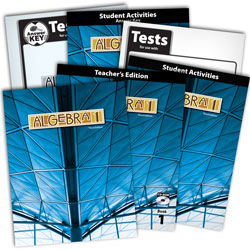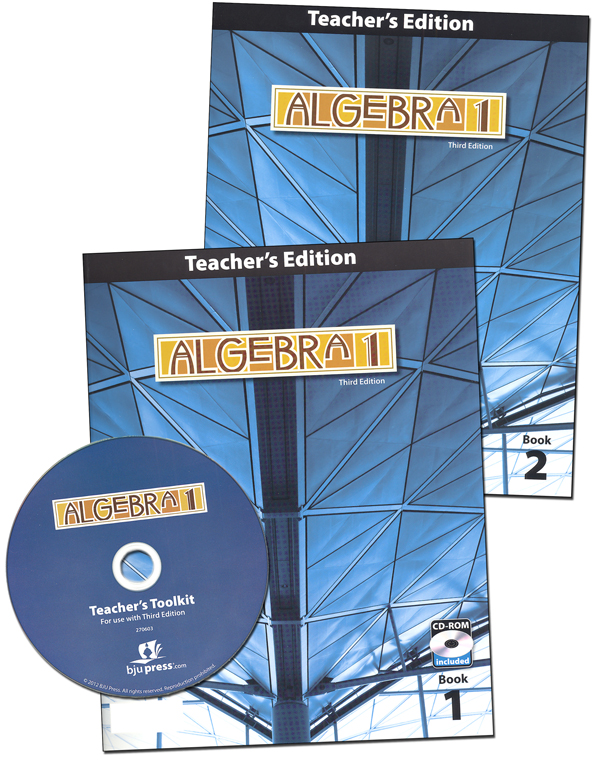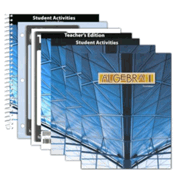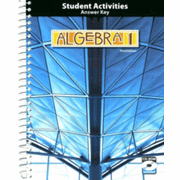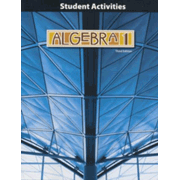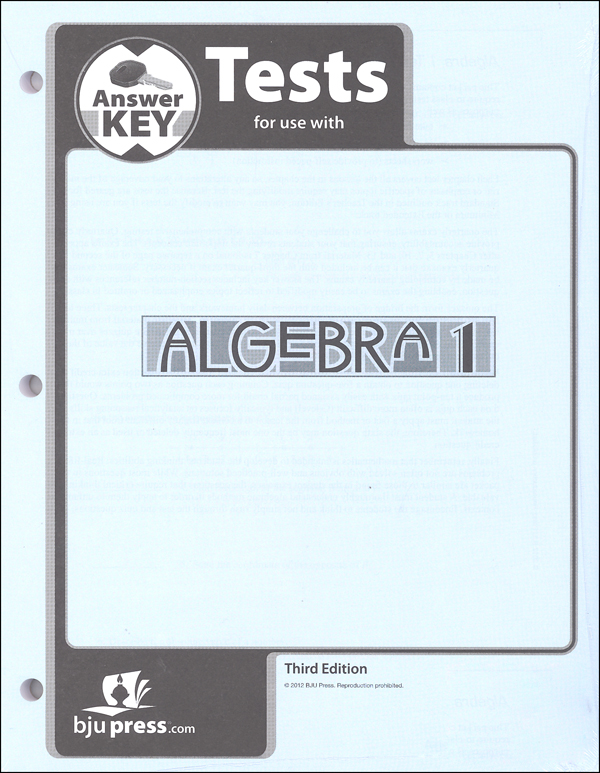BJU Press's Algebra 1 and Algebra 2 courses are now available in their third editions. Parents without a good math background should be able to work with their students through these texts. Lessons are designed to be taught, but explanations in students' texts are often thorough enough for students to do much study independently. Nevertheless, the teacher's editions provide valuable instructional and presentation information that should be used. Also, you will need the teacher's editions to identify appropriate assignments as well as for answer keys even if students are able to complete most lessons on their own.
The two-volume teacher's edition for each course features reduced, full-color student pages with overprinted answers, motivational ideas, strategies for presentation, tips for difficult problems, and detailed solutions for problems. It also has a Teacher's Toolkit CD-ROM. The CD-ROM has resources that are most useful in class situations, but you might want to check out the "Mathardy" review game for each chapter that is included for both courses as well as the students activities for Algebra 2.
The third edition teacher's editions include three suggested schedules: minimum, standard, and extended. While all schedules use material from each of Algebra 1's 13 chapters and all except the last of Algebra 2's 14 chapters, some sections within chapters are omitted. In addition, problem sets are presented under sections A, B, and C, with problems becoming increasingly challenging through the three sets. The minimum schedule presents fewer problems and excludes many from section C that are most challenging. On the other hand, the extended schedule includes more problems as well as more problems from section C. Even advanced students will not solve all of the problems in the exercises.
An example of the differentiated problems in Algebra 1 is the group of questions within each lesson's section C that is labeled "Dominion Modeling." These real-life application questions build upon one another. For example, Lesson 2.4's Dominion Modeling questions all deal with Return on Investment (ROI) in relation to energy-saving light bulbs and water heaters. These sections are generally skipped in the assignments for the minimum schedule. (Dominion Modeling problems appear near the end of each chapter in Algebra 2 rather than within each lesson.) Word problems that include life applications appear elsewhere in the exercises, so all students do have opportunities to apply math in real-life type situations even if they skip these particular problems.
Other special sections might either be skipped for struggling students or used to challenge other students. In Algebra 1, one "Mind Over Math" problem in each chapter challenges students' critical thinking skills. Similarly, a "Sequences" sidebar in each chapter teaches something about sequences or patterns and is followed by some practice problem solving.
The alternate schedules allow all student to complete essential course content while keeping the amount of work and the level of challenge appropriate. However, this requires that you refer to the teacher's edition for suggested problem assignments for each individual lesson since this varies from lesson to lesson.
Cumulative review is built into every lesson. Additional practice and enrichment problems for Algebra 1 are in the separate Student Activities Manual. The Algebra 1 Student Activities Manual has its own teacher edition/answer key. The Teacher's Toolkit CD-Rom for Algebra 2 includes additional student activities, so there is no separate Student Activities Manual for Algebra 2. There are plenty of problems in the textbooks, so I consider the additional student activities as optional. Each course also has a test packet with chapter tests and several quizzes per chapter.
Most students should learn how to use a graphing calculator with the brief tutorial sidebars in each chapter in Algebra 1. Algebra 2 adds work with computer-based spreadsheets and interactive geometry software.
Optional sidebars on "Math in History" in both courses, "Careers in Math" in Algebra 1, and "Algebra Around the World" in Algebra 2 might be inspiring or interesting to students; these sections sometimes have more biblical worldview content than the rest of the book.
Algebra 1 is suggested for ninth grade while Algebra 2 is suggested for eleventh grade. Both courses are thorough and cover material now commonly taught at each level in courses from other publishers. For example, quadratic functions are taught near the end of Algebra 1 rather than saved for Algebra 2.
Algebra 2 assumes prior study of geometry. Standard topics are covered, as well as trigonometry, matrices and determinants, and probability and statistics. The final chapter on conic sections and quadratic systems can be skipped if need be. In this text, I especially appreciate that lessons are introduced with practical applications whenever possible.
Students need a graphing calculator for both courses. Parents and teachers should not skip the instruction in use of calculators and other technology since these features reflect the up-to-date content of these third edition courses.
The Algebra 1 Subject Kit includes the student text, teacher's edition, student activities manual, student activities manual answer key with CD, tests, and answer key for the tests. The Algebra 2 Subject Kit has the student text, teacher's edition, tests, and answer key for the tests.

